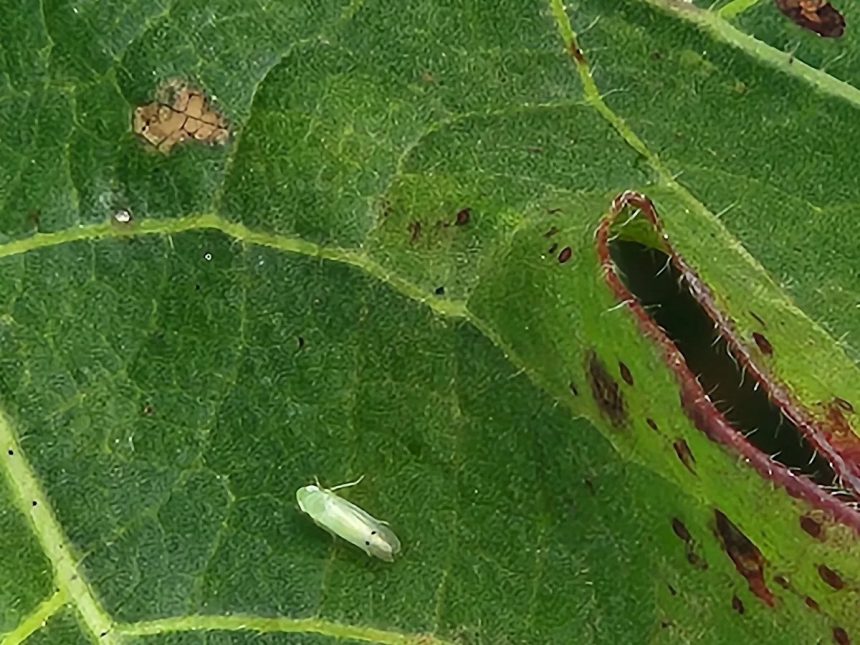A new invasive species has been detected for the first time in the Palmetto State, and it’s been spotted hopping around, munching on cotton and okra.
Jeremy Greene, entomologist and associate department chair of Clemson University’s Department of Plant and Sciences, told Clemson News that researchers are on the fence on what to call the new species.
“Because this insect affects multiple crops beyond cotton ― including okra, sunflowers, eggplants and others ― the name ‘cotton jassid’ is too host-specific,” he said.
Although an official name will be announced at the upcoming committee at the Entomological Society of America, Greene prefers calling the bug the “two-spotted leafhopper.”
Where was the two-spotted leafhopper first identified?
The two-spotted leafhopper migrated north from Florida (the state where it was initially detected in the country), through Georgia, and made its way to South Carolina, where it was first identified at the Edisto Research and Education Center in Blackville.
What does a two-spotted leafhopper look like?
Clemson News described the two-spotted leafhopper as a “small, slender, pale green insect” at just several millimeters in length. Adults have clear wings with a black spot near the tip of each forewing.
Can two-spotted leafhoppers fly?
Yes, two-spotted leafhoppers don’t only move sideways and hop when bothered ― adults can take flight.
What do the insects damage?
Adult and nymph two-spotted leafhoppers will chew on the underside of leaves, causing “significant damage that reduces photosynthesis and overall plant health,” per Clemson News.
What are early signs of infestation?
Yellowing of margins, which turn red and then brown, is the earliest sign of two-spotted leaf infestation.
Where can I report a sighting?
Producers should report detections of the two-spotted leafhopper to the local Clemson Cooperative Extension office, which you can find contact information here, or the Edisto Research and Education Center’s entomology team.
“Producers are encouraged to report sightings, especially in areas west of Interstate 77 and Interstate 20, where the insect has not yet been widely documented,” said Clemson News. “Initial detections have already been reported across much of South Carolina’s Coastal Plain.”
Nina Tran covers trending topics for The Greenville News. Reach her via email at ntran@gannett.com.
This article originally appeared on Greenville News: What is the two-spotted leafhopper? Is it invasive in South Carolina?









